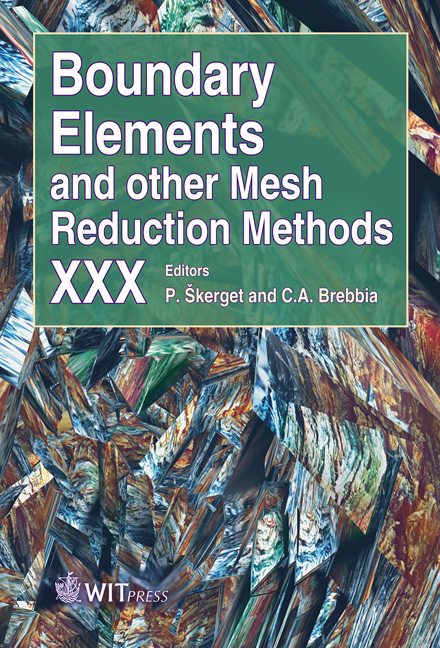Meshless And BE Analysis Of The Flow And Concentration Around A DO-supplying Machine
Price
Free (open access)
Transaction
Volume
47
Pages
10
Page Range
23 - 32
Published
2008
Size
441 kb
Paper DOI
10.2495/BE080031
Copyright
WIT Press
Author(s)
K. Sakamoto, M. Kanoh & T. Kuroki
Abstract
In an earlier study, a meshless method was developed to obtain stable and convergent results for the flow of the entire area of a water reservoir. Shortage or lack of dissolved oxygen (DO) sometimes results in pollution of the water in a reservoir. An attempt was made to ameliorate the concentration of oxygen in the lower layer of the reservoir by using a machine that supplies DO. A meshless method was applied to calculate the concentration distribution of DO and the flow caused by the DO-supplying machine. For the area surrounding the DOsupplying machine, the results calculated by the meshless method appeared to be slightly unreasonable compared with the observed velocity vectors obtained in the model simulation of a water reservoir constructed in our laboratory. The boundary element method did not succeed in obtaining convergent solutions to this problem. In this study, a new meshless method is devised, and our boundary element method is improved so that analytical solutions that are comparable with the observed results can be obtained. Regarding the concentration distribution of DO and the velocity vectors of the flow calculated by the two numerical methods (the WFDM and the FEM) and those observed in our model simulation described above, the effect and accuracy of the alternative meshless and boundary element methods were estimated. Keywords: meshless method, boundary element method (BEM), flow and concentration in water reservoirs, weighted finite difference method (WFDM), finite element method (FEM) and observed velocity in model simulation of water reservoir.
Keywords
meshless method, boundary element method (BEM), flow and concentration in water reservoirs, weighted finite difference method (WFDM), finite element method (FEM) and observed velocity in model simulation of water reservoir.





